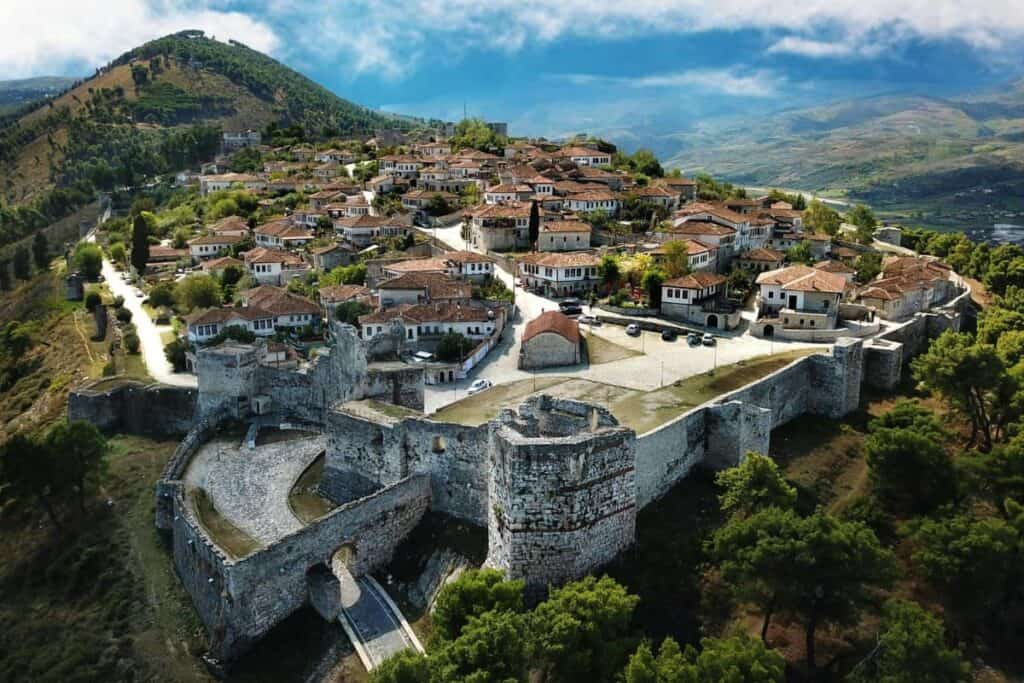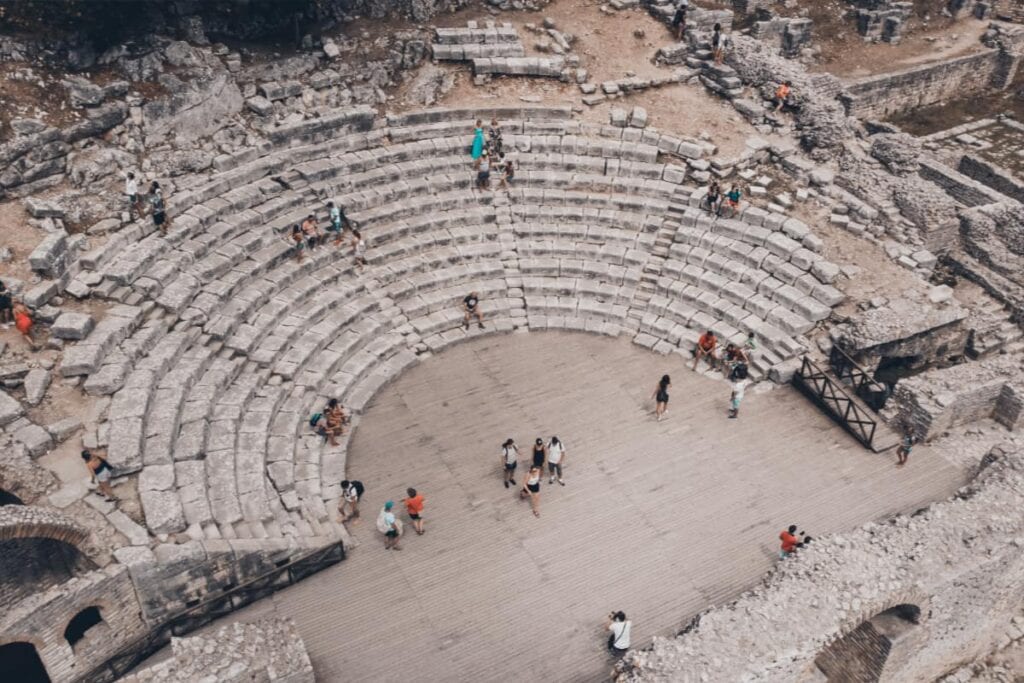Gjergj Kastrioti Skanderbeg, Albania’s national hero, remains one of the most revered figures in the country’s history. Born in 1405, Skanderbeg was an exceptional military strategist and leader who successfully resisted the powerful Ottoman Empire for over two decades. His heroic battles, diplomatic prowess, and unwavering dedication to Albania’s independence have immortalized him as a symbol of national pride and resistance. Today, numerous historical sites across Albania and beyond honor his legacy, offering visitors a glimpse into his remarkable life and achievements.
Who Was Skanderbeg?
Skanderbeg was born into the noble Kastrioti family in Dibër, Albania, during a time when the Ottoman Empire was expanding its control over the Balkans. As a child, he was taken as a hostage by the Ottomans and trained as a soldier in their elite corps. Rising through the ranks, he became a respected commander, but in 1443, he abandoned his position, returned to Albania, and raised his famous red-and-black flag in the fortress of Krujë, marking the beginning of his resistance against the Ottomans.
For 25 years, Skanderbeg led his forces in numerous battles, using brilliant guerrilla warfare tactics to defend Albanian lands. Despite being vastly outnumbered, his strategic brilliance allowed Albania to remain unconquered for decades. His death in 1468 marked the beginning of Albania’s eventual fall under Ottoman rule, but his legacy lived on, inspiring future generations of Albanians in their struggles for independence.
Historical Places to Visit Connected to Skanderbeg
If you’re interested in exploring Skanderbeg’s history, there are several key locations in Albania and neighboring regions that played significant roles in his life and resistance.
1. Krujë Castle and Skanderbeg Museum (Krujë, Albania)
Krujë Castle is the most iconic site associated with Skanderbeg. Situated on a hilltop with stunning views of the surrounding landscape, the fortress served as his main stronghold against the Ottomans. Today, the Skanderbeg Museum, located within the castle, houses artifacts, weapons, and historical exhibits dedicated to his life and battles. The medieval bazaar nearby also offers a taste of Albania’s rich cultural heritage.
2. Lezhë Castle and Skanderbeg’s Mausoleum (Lezhë, Albania)
Lezhë is the site of Skanderbeg’s tomb, where he was buried after his death in 1468. His remains were later stolen by the Ottomans, who believed his bones had mystical powers. Today, the Skanderbeg Mausoleum in Lezhë stands as a national monument, paying tribute to his memory. The Lezhë Castle, overlooking the city, is another historical site linked to Skanderbeg’s military campaigns.
3. Petrela Castle (Near Tirana, Albania)
Petrela Castle was part of Skanderbeg’s defensive network against the Ottomans. This well-preserved medieval fortress, located just outside Tirana, was commanded by his sister, Mamica Kastrioti. Visitors can explore the castle ruins while enjoying breathtaking views of the Erzen River Valley.
4. Shkodër and Rozafa Castle (Shkodër, Albania)
Shkodër, one of Albania’s oldest cities, played a key role in Skanderbeg’s resistance. Rozafa Castle, an ancient fortress perched on a hill above the city, was strategically important in defending Albanian territories. The site offers spectacular panoramic views and a rich history dating back to Illyrian and medieval times.
5. Kaninë Castle (Vlorë, Albania)
Located near Vlorë, Kaninë Castle was another important fortress during Skanderbeg’s era. It is believed that his wife, Donika Kastrioti, was from this region. The castle’s ruins offer insight into Albania’s medieval defense system and provide a picturesque setting overlooking the Ionian Sea.
6. Sinan Pasha Mosque (Prizren, Kosovo)
While not directly linked to Skanderbeg, Prizren in Kosovo was part of the Albanian resistance network during his time. Today, it remains a significant cultural and historical center for Albanians, and its medieval heritage reflects the struggles of the era.
Skanderbeg’s Enduring Legacy
Skanderbeg’s influence extends beyond Albania’s borders, with statues, monuments, and museums dedicated to him in Italy, Kosovo, and across the Albanian diaspora. The Skanderbeg Square in Tirana, featuring his grand equestrian statue, serves as the heart of Albania’s capital and a powerful reminder of his legacy.
His military strategies are still studied by historians, and his story continues to inspire Albanians worldwide. From books and films to national celebrations, Skanderbeg remains an enduring figure of Albanian heroism and unity.
Final Thoughts
Exploring Skanderbeg’s historical sites is a journey through Albania’s proud past. From the fortresses where he fought to the tomb that honors his memory, these landmarks offer a deep connection to one of Europe’s greatest military leaders. Whether you are a history enthusiast or a traveler eager to experience Albania’s heritage, following in the footsteps of Skanderbeg will leave you with a profound appreciation for this legendary warrior and his unwavering fight for freedom.


